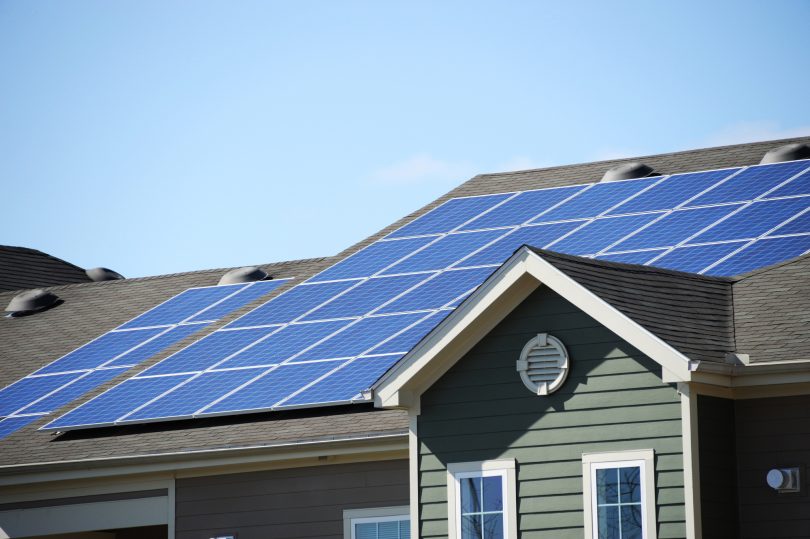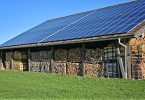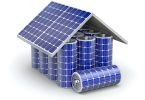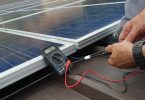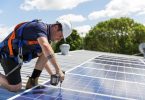Solar energy isn’t just up to 18% more efficient than fossil fuels. It also has no harmful CO2 emissions. Since it’s a renewable long-term resource that protects the environment, switching to solar is a great way to minimize your carbon footprint… and your utility bills.
Choosing the right solar power equipment for your home is important if you’re looking to maximize the benefits of renewable energy. Read on for a complete solar power equipment buying guide for 2023 homeowners.
Your Preferred Type of Solar Panels
Individual homeowners get solar energy in their houses with solar panels. These panels usually sit on your roof and collect energy from the sun. They then convert the light they capture into electricity that powers your home’s lighting, appliances, and electric HVAC systems.
The advantages of solar panels are limitless.
They’re efficient and raise the property value of your home. They also work in all weather conditions year-round, including during nighttime hours when there is no sunlight. They do this by storing sunlight from the daytime hours and powering your home with that stored energy until the next day when the sun rises again.
However, to make the most of these benefits, it’s critical that you understand that there are multiple types of available solar panels. They’re not one-size-fits-all.
The two main solar panel types are monocrystalline and polycrystalline.
Monocrystalline panels are the most common and efficient option for residential homes. They store and convert more sunlight than other options and can drastically reduce your electric bills. They cost more than other solar panel types, but they’re a great investment that ultimately pays off.
Polycrystalline options are comparatively less efficient, making them slightly worse for the environment and slightly more expensive in the long run. However, if you need an initially low price or more portable panels, they’re a great alternative. Their thin-film panels are infinitely better than fossil fuel energy.
Your Mounting Situation for Solar Power Equipment
Most homeowners choose to mount solar panels on their roofs. A roof is the most secure location for solar panels and maximizes the light that they absorb. You’ll get optimal positioning because you can point them in any direction based on what’s efficient in your geographical area.
However, this isn’t possible for some homeowners without extensive roofing repairs and alterations. The shape, slope, and size of your roof matter here. Older houses may need a lot of modifications to accept solar panels.
Luckily, there’s an alternative!
You can mount and install solar panels in your yard if the roof is a no-go. This also works for people looking to lower the cost of installation. It’s sometimes less expensive to mount them in the yard, though it does take up more space and can be slightly less efficient.
Your Budget and Price Expectations
Since solar panels are an investment, they’re likely to save you money in the long run. After all, a huge cut to your utility bills is going to be a long-term relief. However, you do need to think about the costs of installation prior to buying the equipment needed for a solar panel system.
The up-front cost of the panels is going to be high. The average homeowner will pay around $15,000-$20,000 for all initial installation costs. This includes professional contractors responsible for installation as well as the base cost of the panels.
Polycrystalline solar panels will keep you on the lower end of things, so that’s something to consider if you’re on a budget.
Note that there are other options open to you that cost less money. Leasing panels is can cost about $10,000 less in upfront fees. However, it won’t be owned by you – a third party will operate it instead.
Tax Incentives for Going Solar
Leased solar panels are less expensive up front, but they don’t let you reap the tax benefits of going solar.
That’s right – those who invest in solar panels get a tax break! More specifically, you’ll get about a 26% tax credit.
This credit alone may mean that the solar panels pay for themselves. You might get a credit of $15,000 depending on how much you make, which would cover the installation fees. So, in certain cases, solar panels could be essentially free to get.
This credit also is annual, so you’re going to be saving money yearly rather than just once.
Combine that with exponentially lower utility bills, and solar panels definitely will save you a lot of hard-earned income.
Whether You Need a Permit
Different locations have different rules when it comes to solar power. Your state and local regulations dictate whether you need any permits or documentation prior to solar power equipment installation.
Luckily, this information is easy enough to find online. You can simply Google your state codes and make sure you comply with zoning laws in your area. Your state or city website probably has a lot of the information if you look.
If you don’t need a permit, great! The installation process can begin ASAP.
If you do, all hope isn’t lost. You just have to power through the red tape. Apply for the permits online, via the mail, or in person. This process might take a couple of months, so patience is key here.
In the end, though, almost every American homeowner can go solar. There’s nothing to worry about – all you need to do is sit back and wait.
Start the Process of Solar Panel Installation
Now that you know how to choose high-quality solar power equipment, it’s time to begin the installation process.
Our experts are committed to ensuring that you can get the best types of solar panel equipment quickly and at an affordable price. Contact us with any remaining questions you have and get a free solar estimate!
